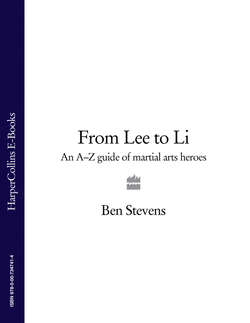Читать книгу From Lee to Li: An A–Z guide of martial arts heroes - Ben Stevens - Страница 11
BODHIDHARMA
ОглавлениеLegends concerning Bodhidharma abound, which makes discerning any real facts about him something of an impossible task. For example, he liked to walk everywhere, but was on occasion apparently able to float across a river on a large leaf.
What we can say with a reasonable degree of certainty is that he was a wandering Buddhist monk who lived sometime around the sixth century, and that he came to China from India.
It’s been suggested that Bodhidharma was from a young age an expert at kalaripayattu (often translated as ‘practising the arts of the battlefield’), a 3 000-year-old martial art that originated in South India, and is to this day practised to promote fluid, animal-like movements and a distinct feeling of inner peace.
Coming to China, Bodhidharma encountered a group of monks who’d grown fat and sluggish, too used to prayer and a lack of physical exercise. To counter this, Bodhidharma taught them what the Japanese refer to as kata in the martial arts (a series of pre-set movements), at which the monks became expert, thus establishing the martial arts in China.
Or (according to a different legend) he entered a period of deep meditation, sitting facing a wall within the Shaolin (’young forest’) Temple for nine years. When he finally got back up and left, he left behind him an iron chest full of manuscripts detailing the secrets of the martial arts, which the monks diligently studied following his departure.
Supporters of the belief that the martial arts originated in India and from there spread out East, like to relay the above stories. While others—who believe that man’s ability and willingness to fight is, and never has been, particular to any one country—prefer to keep a more open mind.
